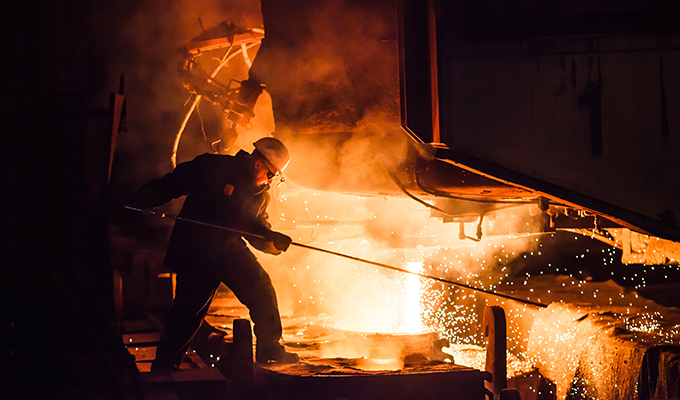Ukraine’s mining and steel industry is working in “survival mode” because of what has happened since Russia’s invasion of the country in February 2022, Oleksand Kalenkov, the president of national steelmakers’ union Ukrmetallurgprom, said in a recent interview with local press.
Steelmaking mills were operating at 15% of their capacity, while mining was at 20%, he said.
Earlier in January, the association reported statistics that indicated that the country produced a total of 6.26 million tonnes of crude steel in 2022, down by 70.7% in comparison with 2021. Rolled steel output totalled 5.35 million tonnes, which was 72% less than in 2021.
Stanislav Zinchenko, the head of Ukrainian commodities think tank GMK Center, who participated in the same interview, said that the destruction and damage to enterprises in Mariupol (the Ilyich Iron & Steel Works and Azovstal, both owned by Metinvest) was one of the biggest hits suffered by the industry.
The Mariupol plants used to produce around 40% of Ukraine’s total output, Kalenkov said.
Zinchenko added that, due to the loss of those two assets, Ukraine had lost 100% of its steel slab exports and 30% of its hot-rolled coil exports, which together “used to provide the biggest export revenues” for the country.
The shelling of enterprises located within the territory still controlled by Ukraine, a lack of staff, power supply problems and the blockades of the country’s Black Sea ports were cited as other important negative factors weighing on Ukraine’s mining and steel sectors.
The Black Sea was formerly the principal transport route for Ukraine’s steel exports. As a result of the port blockages, Ukrainian steelmakers have had to use other options to deliver their products. Some sent goods to Europe by truck or rail, as well as using shipments from Black Sea ports in Romania and Bulgaria, and from Baltic Sea ports in Poland.
“Since the beginning of war, logistics costs have increased 4-5 times,” Kalenkov said, adding that this meant that exports to some destinations, such as China, were no longer economically viable.
He also said that Ukraine traditionally exported 50% of its mining products and 80% of its steel.
“The parity of export and domestic sales has not changed, but sales geography has. If earlier we supplied one-third of our products to Europe, in 2022 the EU consumed 60% of our export volumes, other European countries 10% and Turkey 15%,” Kalenkov added.
“Had there been no port blockades, even considering other problems in mining and the steel industry, we would have been able to export 1.3 million tonnes of iron ore, 150,000 tonnes of pig iron, 200,000 tonnes of [semi-finished steel products] and 220,000 tonnes of finished steel per month,” Zinchenko said.
He added that this would have kept the country’s production at 30-45% of full capacity.
Prospects
Regarding the prospects for the steel industry, Kalenkov said that post-war reconstruction would play a significant role.
“If we stick to European construction standards, steel consumption will surge to 15-20 million tonnes per year,” he said.
This would compare with 4.5-6.0 million tpy over the 15-20 years before the war against Russia, and 2 million tonnes in 2022.
“It is very important that these needs are supplied by Ukrainian steel,” he added.
Zinchenko was, however, cautious about that, saying that there were already signs that Ukrainian infrastructure would be rebuilt with imported steel.
“Ukrainian Railways signed an agreement with a French rails supplier while the State Road Agency of Ukraine contracted French producer Matiere to supply construction [materials] for bridges for €25 million [$27 million],” Zinchenko said. He added that all these products could instead be produced in Ukraine.
Tightening fiscal and monetary policies in the Western world were another area of concern for the Ukrainian steel industry, Zinchenko said.
“Even before the war [begun by the Russian invasion], construction activity in Europe was declining. And it keeps falling,” he said.
“This has resulted in production cuts across the region, which means that iron ore, semi-finished steel and pig iron production dropped too,” he added.
“Earlier,” he said, “when we had [the use of our] Black Sea ports, our market was agile and we could sell to Asia or the Middle East-North Africa region, depending on the situation. Now we do not have this opportunity, and we are directly reliant on the European economy and its development.”
Published by: Vlada Novokreshchenova






